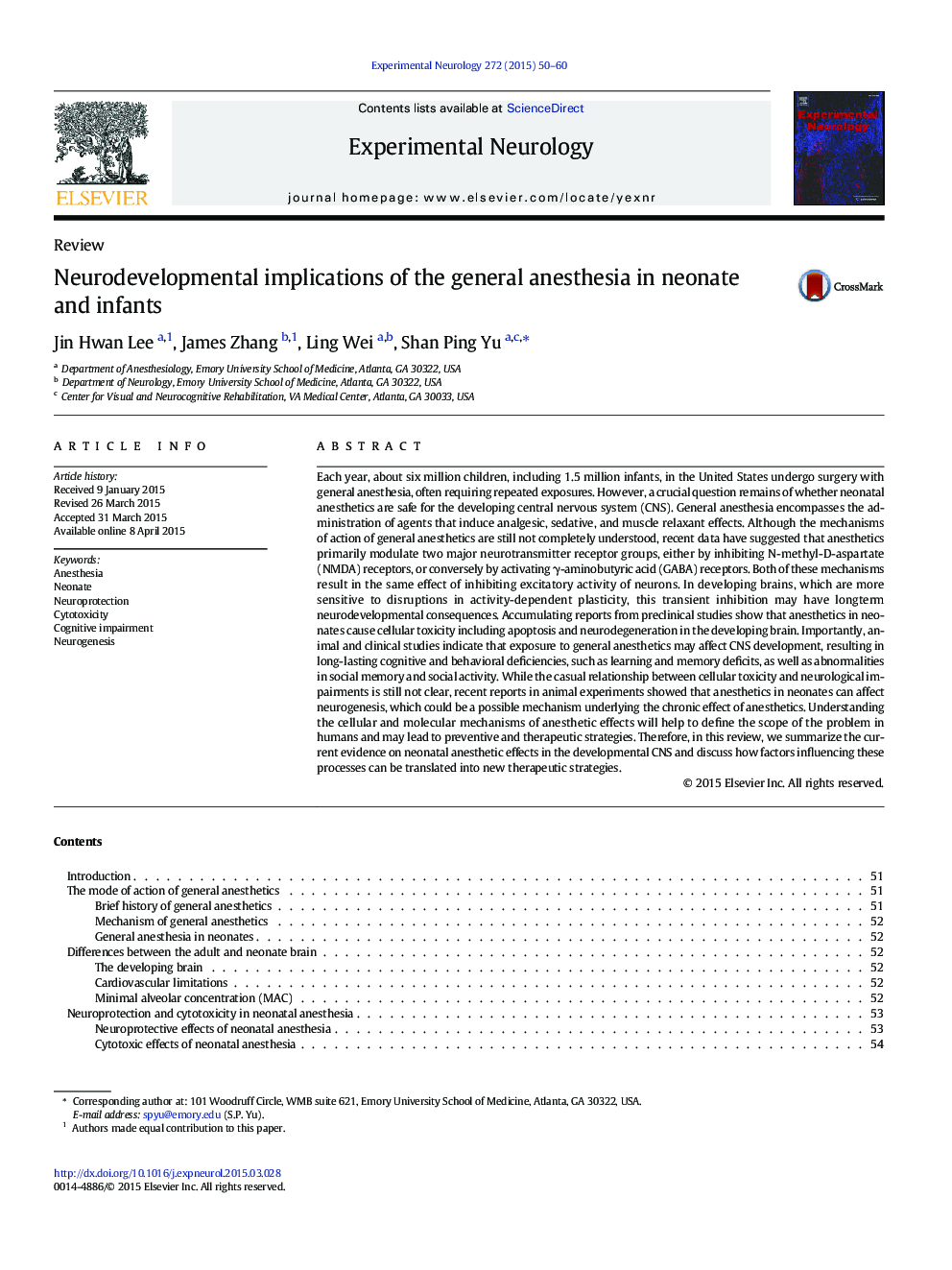| کد مقاله | کد نشریه | سال انتشار | مقاله انگلیسی | نسخه تمام متن |
|---|---|---|---|---|
| 3055379 | 1580161 | 2015 | 11 صفحه PDF | دانلود رایگان |
Each year, about six million children, including 1.5 million infants, in the United States undergo surgery with general anesthesia, often requiring repeated exposures. However, a crucial question remains of whether neonatal anesthetics are safe for the developing central nervous system (CNS). General anesthesia encompasses the administration of agents that induce analgesic, sedative, and muscle relaxant effects. Although the mechanisms of action of general anesthetics are still not completely understood, recent data have suggested that anesthetics primarily modulate two major neurotransmitter receptor groups, either by inhibiting N-methyl-D-aspartate (NMDA) receptors, or conversely by activating γ-aminobutyric acid (GABA) receptors. Both of these mechanisms result in the same effect of inhibiting excitatory activity of neurons. In developing brains, which are more sensitive to disruptions in activity-dependent plasticity, this transient inhibition may have longterm neurodevelopmental consequences. Accumulating reports from preclinical studies show that anesthetics in neonates cause cellular toxicity including apoptosis and neurodegeneration in the developing brain. Importantly, animal and clinical studies indicate that exposure to general anesthetics may affect CNS development, resulting in long-lasting cognitive and behavioral deficiencies, such as learning and memory deficits, as well as abnormalities in social memory and social activity. While the casual relationship between cellular toxicity and neurological impairments is still not clear, recent reports in animal experiments showed that anesthetics in neonates can affect neurogenesis, which could be a possible mechanism underlying the chronic effect of anesthetics. Understanding the cellular and molecular mechanisms of anesthetic effects will help to define the scope of the problem in humans and may lead to preventive and therapeutic strategies. Therefore, in this review, we summarize the current evidence on neonatal anesthetic effects in the developmental CNS and discuss how factors influencing these processes can be translated into new therapeutic strategies.
Journal: Experimental Neurology - Volume 272, October 2015, Pages 50–60
